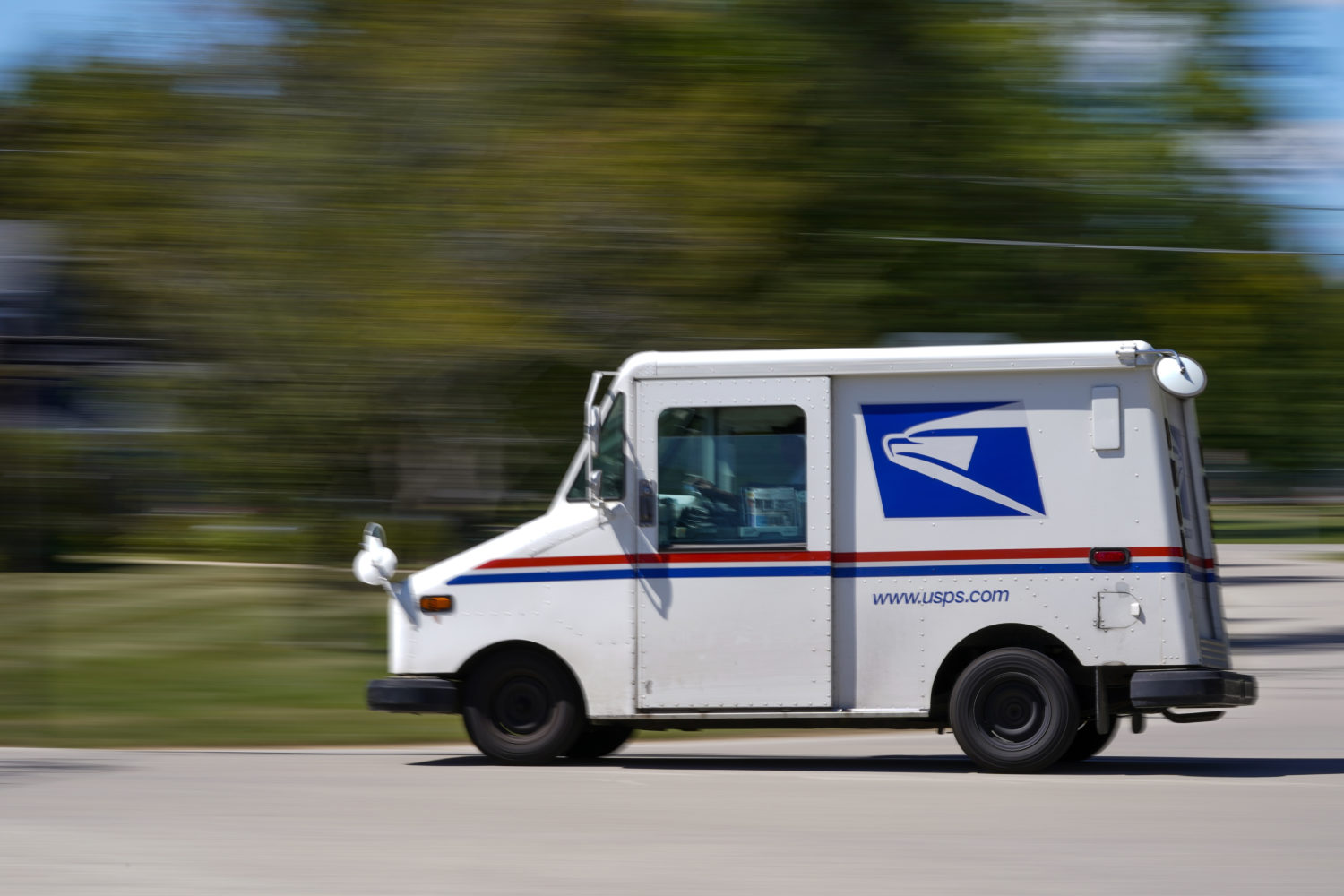This article was originally published on Northwestern University’s Medill Local News Initiative website and is republished here with permission.
Switching newspaper delivery from costly carriers to the U.S. Postal Service seemed like a no-brainer for Jordan Brechenser, president and publisher of Vermont News and Media. But things quickly got complicated, and that was before a local postmaster obtained an order of protection and moved to a new post office after a confrontation in a local bar.
The decline of print journalism has left penny-pinching publishers with fewer and fewer levers to pull. Stepping back from carriers last year enabled Brechenser to increase staff and pursue his mission of covering local news in southern Vermont. His advertisers were on board, too.
Brechenser figured out how to obtain a postal permit, label and assemble the newspapers by mail route and drop them off in individual totes before 6 a.m. at local post offices, so they could arrive in readers’ mailboxes that same day.
Trouble is, not all local post offices are prepared to deliver all those papers. Shortly after Brechenser had dismissed his carriers and made the big switch, subscribers started calling to complain about missing one edition after another. Brechenser handed out credits, later discovering that prepaid postal charges aren’t refundable, even if the papers were never delivered — or, as in this case, never seen again once they were dropped off for delivery.
Brechenser’s Bennington Banner newspaper began covering the poor quality of the local postal service, he said, after hearing about a resident who didn’t get her medicine by mail for weeks, and another who had a car repossessed when dunning notices failed to arrive. Finally, a local confronted the postmaster at the Madison Brewing Co. pub in downtown Bennington, demanding to know what happened to his mail.
Within weeks, the postmaster had his order of protection against the local, and Brechenser was no closer to having his papers reliably delivered. The appointment of a new postmaster in Bennington has helped, but not eliminated, the service issues, he said.
Newspapers have been delivered by mail for, literally, centuries. The earliest second-class mail took shape in colonial times, and many weekly newspapers have relied on the postal service for their entire existence. A number of small dailies in rural areas got into the act after the financial crisis of 2007-08.
At major metro dailies, including standard bearers like the Wall Street Journal, it’s not uncommon to provide mail delivery for readers outside primary circulation areas. Gannett, the nation’s largest newspaper publisher, makes all 400-plus of its titles available for postal delivery, a spokeswoman said, primarily for readers who relocate but want to maintain connections to their previous communities.
Given the long history of newspaper-postal service interaction, you might think the formula for success would be well understood. In fact, nothing about working with the postal service is simple, according to Tonda Rush, general counsel of the National Newspaper Association and one of the industry’s leading experts on mail delivery.
As Rush noted, and Brechenser can attest, “This is not an easy shift to make.” In fact, Rush’s organization not long ago launched a training program for managing circulation by mail, given that, as she says, “There’s no book out there that captures all of this.”
Still, the economics are so compelling that many publishers are laying plans to make the change, especially as they also consider reducing daily print days. “Now we’re seeing some metro newspapers looking at it,” said Rush. “There are a lot of papers looking at it.”
Some newspaper executives who have relied on postal delivery for decades wonder why the change is taking so long. “It’s high-quality delivery at predictable times,” said Tim Price, senior vice president at Boone Newsmedia Inc., which delivers most of its 70-plus newspapers by mail, accounting for more than 85% of its circulation. “If our primary goal is to get the printed product in the hands of the readers, we can do that with the post office.”
Details matter when moving to mail
Like other changes in basic business practices, the outcome of a transition from carrier to mail delivery depends on execution.
“The cat’s out of the bag for mail delivery being lower-cost than carrier delivery in almost every case, especially in smaller markets,” said Brad Hill, chief executive officer at Interlink, which provides mailing software to more than 2,000 newspapers and also consults on mail delivery. “If executed well, the shift to mail does not have to mean we’re going to lose subscribers. There has been a savings with the mail for a long time, but no one really wanted to talk about it because they didn’t need to.”
Carrier delivery has a long, storied tradition in newspapering. What’s changing isn’t just the rise in pay, fuel and other expenses, but also the difficulty employing carriers. A tight labor market has meant that newspaper chains have had as many as 20% of their routes open, meaning carriers were unavailable to make deliveries. “It forced them to reconsider,” Hill said.
Gannett has started replacing carriers with mail delivery in some local markets where recruiting is toughest. Currently, fewer than 25 of its newspapers are delivered solely by mail, representing less than 5% of total circulation, a spokeswoman said.
When the company reported a big second-quarter loss in August, it attributed part of its financial woes to delivery problems and pledged to make the investments necessary to build up its carrier force even as it imposed severe cuts elsewhere in its operations.
In announcing third-quarter results in November, CEO Mike Reed said the company had reduced the percentage of open delivery routes from 14% to 10% over the previous three months and announced Gannett would continue to convert to mail in select markets. “Our goal is to reliably deliver to the consumer and lower costs in some cases as well as eliminate unprofitable distribution routes where possible,” Reed told investors. The aim, he said, was “to improve retention, stabilize our print circulation trends and, most importantly, improve the lifetime value of our print subscriber base.”
Milking the print market for as much as possible before it eventually fades out is hardly an original idea. But as print readership dwindles and subscribers are fewer and live farther between, maintaining carrier delivery becomes tougher and more expensive.
Consider a carrier who delivers newspapers on a long, remote route. As print subscriptions declined over the years, as they have throughout the industry, fewer and fewer papers were being delivered, on fewer days of the week. For carriers paid a flat rate per piece, the result was the same long drive for less money, making other job options more attractive. Subsidies and hardship allowances needed to keep carriers on less-attractive routes can cut deeply into bottom lines.
The first question many publishers ask Interlink is how much postal delivery will cost vs. carrier delivery. The postage fee for a four-ounce newspaper delivered inside a publication’s local county is 11.2 cents, Hill said, or about 18 cents for delivery outside the local county. Traditional newspaper carriers might cost between 20 and 40 cents per paper and as much as 80 cents for those remote rural routes, he said.
Comparing those direct costs head-to-head isn’t always the best measure, Hill noted, as variables can complicate the math. Many traditional carriers deliver more than one publication on the same route, for instance, and not every newspaper optimizes its delivery practices to achieve the lowest possible postal costs.
Another wild card is reader reaction. For daily newspapers delivered first thing in the morning by carriers, delivery by postal service means the “morning” paper might not arrive in the mailbox until late afternoon. Similarly, “Sunday” papers going the postal route typically turn into “weekend” editions delivered on Saturdays. Whatever the time and date, one advantage is that papers delivered by mail can be placed in government-protected mailboxes, as opposed to tossed onto wet lawns or driveways by carriers on the go.
The shift to mail delivery has gone hand-in-hand with the trend toward cutting back print editions. Daily newspapers making the switch to postal service have often used the occasion to cut back from seven or six print days a week to five or fewer, which can further aggravate subscribers already skeptical about mail delivery.
Along with reader reaction, publishers need to consider the future of the postal service, which faces many of the same financial pressures as newspapers with their carriers.
Service levels and delivery-force protocols are in flux, raising doubts about whether time-sensitive newspapers will continue to be delivered with the regularity publishers require. Beyond that basic concern, legislation to reform postal finances, signed into law earlier this year, has helped to pave the way for additional rate increases reflecting operational costs.
Postage rates soaring
Periodical mail is a money-loser, though tracking its costs is so complex that even the postal service doesn’t know for sure how much it’s losing, according to Rush. “The postal service thinks it’s covering about 50% of its costs, but I think it’s better than that,” she said. “It probably operates at some loss because the postal-service labor costs have gone up.” Overall, the volume of mail, including periodicals, is down about 20% over the past decade, which also is contributing to rate hikes as fixed costs are spread over a smaller base.
The postal service raised its rates for periodicals by 9% in mid-2021 and another rate increase of approximately 8%-10% will kick in as of January, the amount differing among newspapers based on distance, weight and other delivery factors. On the plus side for publishers with weekend editions, a push to eliminate Saturday postal delivery is off the table for now.
Prince of Boone Newsmedia says the challenges of the postal service pale in comparison to maintaining a carrier force. “While there are some variables and unknowns, there are more with the carrier force,” he said.
Still, the looming rate increase, and the promise of more in the future, could discourage news executives from ditching carriers for mail service. “If it continues at this level, I don’t know how many newspapers we’re going to have in the mail,” said Rush. “No matter the strategies the postal service comes up with, it is going to require Congress to put money into the system. They don’t want to do that.”
The Bennington experience aside, some publishers report good cooperation from their local postal representatives, including Brechenser, who said, “It’s a relationship, and some of the postmasters and management do care about our delivery.”
Newspapers and local postmasters have worked out systems over the years to make sure newspapers get delivered on time, Rush added. “There’s a lot of goodwill between the newspapers and the people who actually deliver the mail,” she said.
Savvy postmasters recognize that obtaining a large number of newspapers to deliver can result in greater rewards for them, as part of their compensation formula is based on volume, according to Prince. “You go from being just another business in town to being the postmaster’s largest customer.”
To the extent print advertising and subscriptions remain a critical source of revenue for running newsrooms, a delivery method will be needed. And one way or another, mail service is likely to be around for years to come. Until print revenue streams such as legal notices, obituaries and preprints have migrated online,” We will be producing a paper, which I think is great,” said Brechenser. “I hope print stays around and I hope there’s a small resurgence of people who want to experience reading a paper.”
Print in a digital era
Tim Franklin, senior associate dean at the Medill School of Journalism, Media, Integrated Marketing Communications at Northwestern University, said he expects more local news organizations to at least explore a pivot to postal delivery, “because the potential cost savings are huge, and it eliminates the headache of carrier turnover. That said, this shift can’t be seen as just a transformation of how printed newspapers are delivered. This also raises the existential question of what a printed newspaper should be in the digital era.
“If consumers who are used to getting a paper in the morning now are going to pluck it out of the mailbox in the afternoon, they’re going to expect it to have a different value to their lives. What’s breaking news at press time may be old news by the time it hits the mailbox,” Franklin said. “So, the printed newspaper needs to be relevant in other ways – more enterprise and feature stories that are in-depth, contextual and personal; more stories that point forward, not backward. A number of news organizations already are headed in this direction as a way to differentiate their print and digital editions. But this change in delivery metabolism will force a rethinking of what’s actually in the printed newspaper that’s being delivered. And that can be a positive, constructive change for the newsroom, too.”
Despite ongoing problems in Bennington, the situation for Vermont News and Media has stabilized. Looking back on the switch more than a year later, Brechenser said he still would have done it because of the cost savings. But he would have phased in the delivery change, he said, starting with the outskirts of his circulation area and adding sectors one by one, to provide more time to work out delivery issues.
Still, he’s proud of his communication efforts with subscribers, who appreciate his willingness to listen to their complaints and place a high value on local news coverage, he said.
“They know I advocated for them at the post office,” he said. “At least when I talk to somebody and I explain the economics of it all, I can say I have offices in all three towns where I circulate. We’ve increased [the number of] pages since we took over local ownership. We have a reporter and photographer at practically every school sporting event. We fixed the problem of a financially unsustainable delivery method. That allowed us to focus on … local news that people want to read and no one else covers as we do.”







